Hyperventilation is breathing too quickly or too deeply, resulting to more exhaling than inhaling. Respiration consists of a healthy balance between inspiration of oxygen and expiration of carbon dioxide and when one hyperventilates, this often leads to low levels of carbon dioxide (CO2) in the blood. The rapid decrease in carbon dioxide level in the blood results to the different symptoms of hyperventilation, which will be discussed later. Hyperventilation is also called over breathing.
Rapid breathing usually occurs with panic and/ or anxiety but may also sometimes signify an underlying medical condition, such as heart or lung disorder, bleeding and infection. The doctor will diagnose the cause of hyperventilation. In some cases, hyperventilation may be related to a medical emergency unless it has occurred before and guaranteed by the doctor that it can be managed at home. Recurrent hyperventilation may denote hyperventilation syndrome but always seek medical attention to confirm.
Disclaimer: This article does not provide medical advice or treatment. The information given should not be used for self-diagnosis of possible conditions. Seek medical attention when necessary. To learn more about to how to give first aid to hyperventilation, enrol in first aid course with a workplace approved provider.
Causes of Hyperventilation
Panic is one of the leading causes of hyperventilation. In many cases, panic leads to breathing quickly, where in turn, breathing quickly may lead to a panicked feeling. This results to a vicious cycle of panicking and breathing quickly. The following may also lead to hyperventilation:
- Panic attack
- Anxiety and nervousness
- Anger
- Depression
- Stress
- Particular fears or phobias
- Heart conditions such as, heart failure or heart attack
- Lung conditions such as, asthma, pulmonary embolism and chronic obstructive pulmonary disease (COPD)
- Infections such as, pneumonia or sepsis
- Bleeding
- Intense pain
- Particular drugs, e.g. aspirin overdose
- Use of stimulants
- Pregnancy
Symptoms of Hyperventilation
Due to the decreased levels of carbon dioxide, the blood vessels supplying blood to the brain narrow and consequently lead to the reduction in blood supply to the brain. Hyperventilation may not always be observed by an individual. In some cases, the following symptoms are initially perceived before observing hyperventilation.
- Shortness of breath (dyspnea)
- Chest pain
- Palpitations
- Dizziness
- Light-headedness
- Confusion
- Dry mouth
- Belching
- Bloating
- Hand and feet muscle spasms or tingling sensation
- Sleep disturbances
- Weakness
First Aid Management for Hyperventilation
In majority of hyperventilation cases, first aid can be administered to a hyperventilating individual to reduce the symptoms. If one is experiencing hyperventilation, it may be helpful to have another person assist the individual. The following steps may help increase carbon dioxide levels in the body:
- Stay calm at all times.
- Coach the individual to relax breathing. This can be done in several ways:
- Breathe through pursed lips, similar to blowing out a candle.
- Cover the mouth and alternately breathe using one nostril at a time.
- Take deep slow breaths from the abdomen rather than the chest. Every five seconds, take one breath.
- Call emergency medical services if any of the following symptoms appear:
- Crushing or squeezing chest pain
- Difficulty breathing.
- Symptoms don’t alleviate after several minutes of treatment.
- Hyperventilating for the first time.
Source:
Hyperventilation (2012). National Institutes of Health. Retrieved September 27, 2013, from Hyperventilation
Norwood, Varnada K. Hyperventilation Treatment (2011). WebMD. Retrieved September 27, 2013, from Norwood
